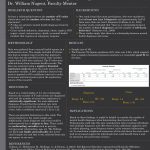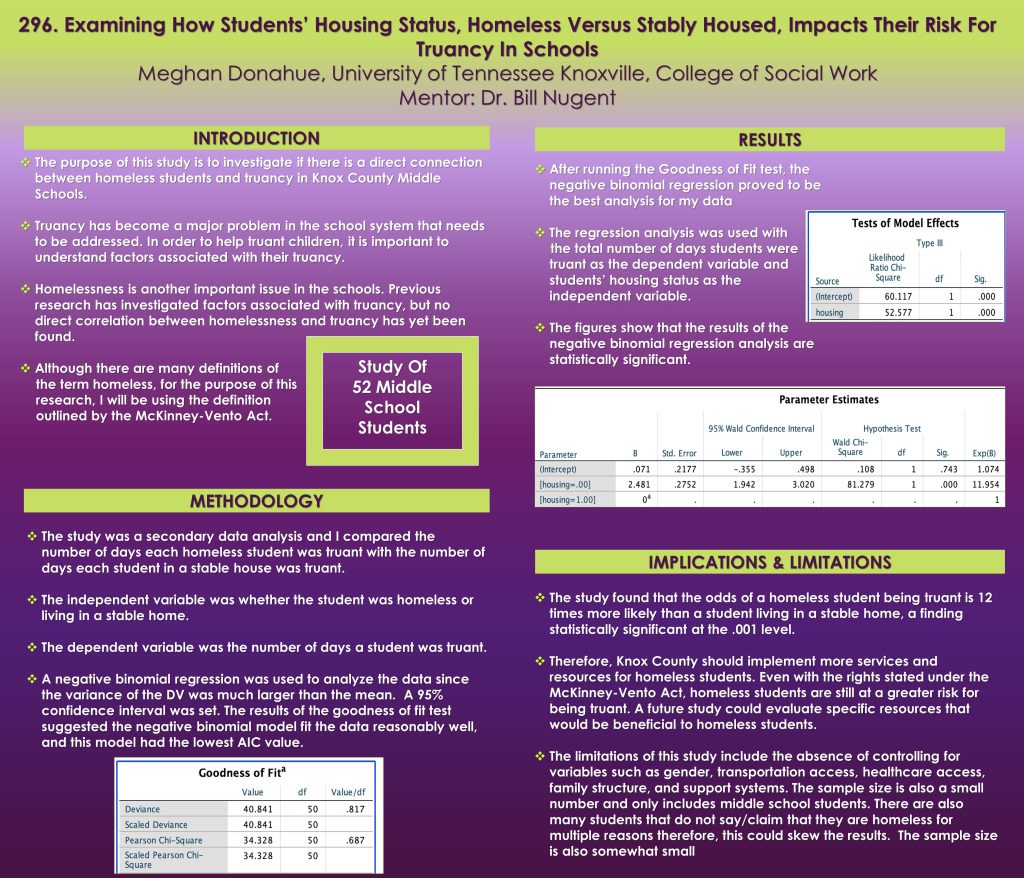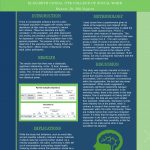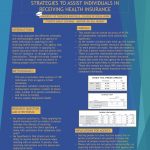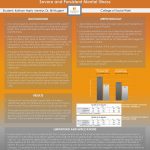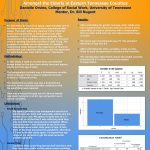The Exhibition of Undergraduate Research and Creative Achievement (EURēCA) is an annual event that showcases research and creative activities by currently enrolled undergraduate students in collaboration with a University of Tennessee, Knoxville. Entries are judged by a panel of UT faculty members and industry partners. This year the judges for the UT College of Social Work were Courtney Cronley, Kelly Brooke Martin, David Dupper, Daniel Horn (PhD student), and Shannon Cain (PhD student).
Ten College of Social Work Students participating in this event: Karolynn Beasley, Bailey Cochran, Anna Crutcher, Shelby Delille, Meghan Donahue, Elizabeth Gonda, Kathryn Harris, Danielle Orsino, Corinne Schnadelbach, and Rachel Sitton.
Five students won college level recognition and two went on to receive university-wide awards. The college winners were:
- First place—Shelby DeLille
- Second place—Rachel Sitton
- Third place—Meghan Donahue
- Award of Merit—Karolynn Beasley
- Award of Merit—Elizabeth Gonda
The winners of the university’s final competition that recognized the top posters overall were:
- Silver award—Shelby DeLille
- Bronze award—Rachel Sitton
William Nugent, PhD, and Director of Research for the college stated, “Congratulations to all of you on your EURēCA presentations! I heard from faculty and PhD students how generally impressed they were with your research and presentations. They were impressed with the work you have done.”
Below is more information about the research completed by our student presenters.

Shelby DeLille – First Place, College Competition and Silver Award, University Competition for the project titled: Relationship between Type of Health Insurance, Frequency of Clinic Visits, and Clinic Income
Insurance assistance services play an important role in ensuring individuals have health insurance and can access healthcare and mental health services, as well as in enabling healthcare agencies to bill insurance for services provided. An integrative pediatric healthcare agency in a southeastern state provides insurance assistance services free of charge to uninsured clients and patients. The purpose of this study is to explore the relationship between the insurance type, private or state-funded, of an individual who received insurance assistance services at this agency, the frequency of that individual’s clinic visits after becoming insured, and clinic income generated by those visits.

Rachel Sitton – Second Place, College Competition and Bronze Award, University Competition for the project titled: Relationship Between F Codes and Crises
Background: There is a deficit in literature on the relationship between mental health diagnoses and crises, but it has been speculated that having more than one diagnosis might increase the risk of crises. Given this, it might be beneficial to track clients with multiple diagnoses closer than other clients so that care providers can provide extra support. This study investigates if there is a relationship between the number of F codes a client has and the number of crises they experience. Method: This study will involve a secondary analysis of 2019 data from an agency in the Southeastern United States on client mental health diagnoses (F codes) and crises. The sample includes 104 clients. The independent variable is the number of F codes a client is diagnosed with. The dependent variable is the number of crises the clients experience. The data was analyzed with a negative binomial regression. Results: The results showed a statistically significant relationship between the number of mental health diagnoses that clients have and the number of crises that they experience.
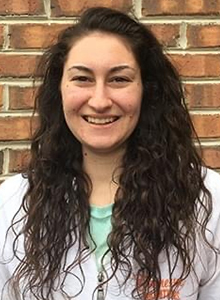
Meghan Donahue – Third Place, College Competition for the project titled: Examining How Students’ Housing Status, Homeless Versus Stably Housed, Impacts Their Risk For Truancy In Schools
Truancy has become a major problem in school systems, along with homelessness. Therefore, the purpose of this study is to investigate if there is a direct connection between these two problems that both have a high statistical rate of occurrence. The population of interest is students at the middle school, ages 10-13, in a county in a southern state. Data will be obtained by using records of students who have reported being homeless, as well as students who are in stable housing, and compare student’s numbers of truant days between these two groups. Since there are hundreds of students, I will obtain a simple random sample of 52 students throughout the past year, 26 from each group. The independent variable will be a dichotomous variable based on whether a child is homeless according to criteria in the McKinney-Vento Act. A child living in a stable home will be scored 1 and a child who is homeless will be scored 0 on this variable. The dependent variable will be a count of the number of days a student is truant and transferred into rate data for research purposes. The data will be analyzed using a linear regression. The hypothesis is that there will be a positive relationship between truancy and homelessness.

Karolynn Beasley – Award of Merit, College Competition for the project titled: How has the TN Together Act Impacted NAS Birth Levels & Prescriptions of Opioids?
A Study on the TN Together Act: Is it helping our opioid epidemic and levels of NAS? Background: Neonatal Abstinence Syndrome is a condition where infants go through withdrawal symptoms due to exposure of drugs of dependence in utero. NAS is a very serious issue nationally, and numbers of children born with NAS continue to rise. While there has been research into the development and management of NAS, there is still much research to be done on the policy end. Policy seems to be a main influencer of this epidemic, and state legislation has set to improve NAS levels. There is a new program that was implemented in May of 2018, titled Together TN. This policy was designed to combat issues surrounding the opioid epidemic and high levels of NAS. This study investigates the effectiveness of this policy. Method: This study analyzes secondary data from before the TN Together Act was passed and after it was passed and organized by monthly reports.. The data sets include NAS levels, along with the percentage of mother’s prescribed opiates. Analyses will investigate a possible relationship between the TN Together Act and NAS births in the state. Results: The results are expected to show the degree to which the TN Together Act has affected NAS births in Tennessee.

Elizabeth Gonda – Award of Merit, College Competition for the project titled: Depression and the East Tn Latinx Community
There is considerable evidence that the Latino immigrant population struggles with anxiety and/or depression at high rates as compared to natural born citizens. These two disorders are highly correlated in this population, and while depression and anxiety are prevalent, participation in treatment for depression is lower in this population than in the general population. The purpose of this study is to determine if the workshop series, “Eating Smart and Moving More”, affects levels of depression among adult Latino participants.

Bailey Cochran participated with the project titled: Examining the Most Efficient Strategies to Assist Individuals in Receiving Health Insurance
This study analyzed the different strategies and methodologies used in an agency to assist individuals in applying for and receiving health insurance. This agency aids individuals and families in applying for health insurance either over the phone with ”how-to” guidance or through in-person consultations. Through this study I hoped to find which strategy is most successful in helping people receive health insurance.

Anna Crutcher participated with the project titled: Is Ready, Set, Action an Effective Intervention for 4th and 5th Graders with High Action Orientation and Low Emotional Control
There are all kinds of interventions that after-school agencies are beginning to do to implement. At the Boys & Girls Club, we are always looking for new interventions to try that would be most effective for our members. One way that we assess which members need interventions is through the Holistic Student Assessment, also referred to as HSA, by the PEAR Institute. The Holistic Student Assessment is a survey that assesses participant’s strengths and weaknesses through a series of questions. Through the data we receive back from these surveys, one thing we look for is participants that were identified for having high action orientation and low emotional control. I did this because I knew that I needed an intervention for our 4th and 5th graders because these are skills that can be a challenge for them. The PEAR Institute also provides a number of interventions in addition to this assessment. Some of the interventions are called Smart Girls or Passport to Manhood, which can teach children about what it means to be a man or a woman and give them a safe space to process these feelings while going through developmental changes. Another intervention is called Photo Justice, where the members can take pictures throughout their neighborhood or a place that is close to their heart, and they can talk about what the pictures make them think about. There are plenty more interventions, but the one we decided to run with our 4th and 5th grades is called Ready, Set, Action. Ready, Set, Action is a group that is focused around four main skills: self-control, self-awareness, perseverance, and teamwork. For the students that participated in the HSA, these are some of the challenges that they identified having. Because of these reasons, we thought Ready, Set, Action would be the most effective intervention for these members, and this study will evaluate whether or not that is correct.

Kathryn Harris participated with the project titled: Examining the Relationship Between Familial Support and Success in a Long-Term Treatment Facility for Adults with Severe and Persistent Mental Illness
My research looked at what relationship exists between familial support and success in a long-term treatment facility for those with severe and persistent mental illness. When a client has to leave this facility to go into a higher level of care, it is disruptive to both their treatment and others in the milieu. The treatment team looks to find ways to best support the client’s recovery and keep them in their facility until they are able to function in the community again. The purpose of this study is to look at whether or not encouraging familial support for the client is beneficial to their recovery. If familial support is helpful in keeping the client from experiencing increased acuity and having to go to a higher level of care, it would be something the treatment team may want to encourage when appropriate.

Corinne Schnadelbach participated with the project titled: Waiving Barriers for the Homeless to Obtain Independent Housing
Waiving Barriers for the Homeless to Facilitate Independent Housing Background: Expensive court fees have been identified as a barrier for many who are homeless in obtaining basic needs such as housing and driver’s licenses. Sometimes, the courts work with the homeless and their case workers in the community to waive court fees for these individuals so that they can obtain independent housing and a driver’s license if needed. This study analyzes the relationship between waiving court fees and the percentage of participants who have obtained independent housing and a driver’s license if there was an indicated need. Method: This study will involve a descriptive secondary analysis of participants from 2017 who had their court fees waived. Data was obtained by contacting the previous social workers of the persons studied to determine their housing and driver’s license status at last contact with the social worker. Results: The results appear to show that getting court fees waived may help homeless persons obtain independent housing, but fewer were successful at obtaining their driver’s licenses after their court fees were waived.

Danielle Orsino participated with the project titled: Examining the Relationship Between Requiring Assistance with Transportation and the Occurrence of Financial Crimes Amongst the Elderly in Eastern Tennessee Counties
Research Question: Does Requiring Assistance with Transportation Make The Elderly More Vulnerable To A Financial Crime? Background: Per the National Council on Aging, approximately one in ten Americans aged sixty plus have experienced elder abuse. The most commonly reported crime, financial abuse and exploitation, is estimated to cost older Americans 2.9 to 36.5 billion dollars annually. The purpose of my study is to determine if there is a positive correlation between requiring assistance with transportation and the occurrence of financial exploitation of individuals over sixty within eastern Tennessee. Method: This study will be an ex post facto correlational design based on the data from one hundred past agency clients. The independent variable will be a dichotomous variable indicating if the research subjects are/were victims of a financial crime. The dependent variable will also be dichotomous and will indicate whether assistance with transportation is/was required. Data will be analyzed through use of a binary logistic regression analysis. A contingency table will separate into percentages those who do and do not require assistance with transportation, and those who are or are not victims of financial abuse by gender. Results: The results show a statistically significant relationship between requiring assistance with transportation and being an elderly victim of financial abuse within eastern Tennessee counties.


